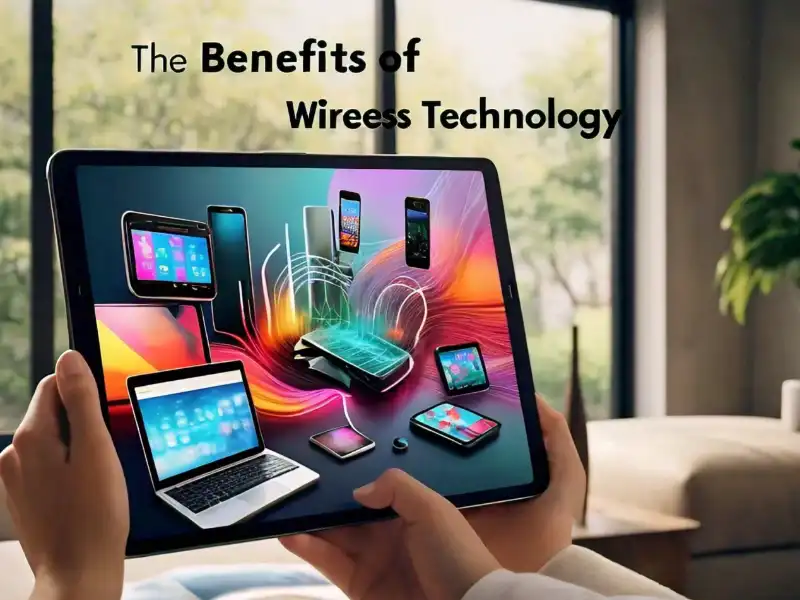Today, we live in an age of continuous rush. Therefore, wireless technology is integral to keeping us connected and productive. People use phones, laptops, smart home devices, and wearables because of the wireless revolution, which has changed how we live, work, and communicate. Besides that, wireless technology is all about what it is and how it operates on a fundamental level. Briefly, we will explore the compelling universe of wireless technology, the wonders it creates and your life.
The Evolution of Wireless Technology
Wireless engineering flourished only in the last quarter of the 19th century when Guglielmo Marconi produced the first rudiments of the telegraph and the radio, leading to future developments. It has been almost two decades before wireless technology made huge advancements, all of which can be traced from the first mobile phone theorized in the 1970s to the more recent development of Wi-Fi in the 1990s.
Wireless technology has developed into a massive family of communication methods that use electromagnetic waves to send data without physical cables. Nowadays, cellular networks are alongside, andBluetooth and NFC are the defining elements of our interconnected world.
How Wireless Technology Works

In foundation, the wireless technology functions with radio frequency signals to transfer information between the devices.
From 14 to 24, when a phone call is made on a smartphone, music is streamed to wireless headphones or the Wi-Fi network is connected to all the wireless communication that captures the power of wireless communication.
Wireless signals are sent through the air and picked up by receivers in other devices, making data transfer seamless over short or long distances. Data transmission is achieved by using transmitters, receivers, antennas, and modulation techniques that encode and decode data in wireless technology.
Types of Wireless Technology
Cellular Networks
Cellular networks, such as 4G and 5G, are the basis of mobile communication, which allows users to make calls, send messages, and access the Internet on the go. Through a network of interconnected base stations, these systems manage to form coverage over a relatively large geographic area.
Wi-Fi
Wi-Fi technology allows internet surfing g on a wireless base within the hour office,s and pu, public spaces. Wi-Fi routers use radio waves to create a local area network (LAN) through which multiple devices can simultaneously connect to the Internet.
Bluetooth
Bluetooth technology is mostly used for short-range wireless connections among devices such as smartphones, headphones, and smartwatches. Bluetooth connections are secure and low-energy, so they are excellent options for linking devices nearby.
NFC
NFC technology provides contactless networking between devices when they are brought close together. It is most commonly used for mobile payments, transit passes, and smartphone data transfer.
The Benefits of Wireless Technology

Convenience
Wireless technology has provided us with three very important advantages: convenience, mobility, and flexibility. Wireless connectivity allows you to be online, call, and even transfer data without being restricted to a physical connection.
Mobility
Using wireless technologies allows users to escape the boundaries of a place and stay connected at the roadside. Be it distantly, other than staying in one place or just travelling, wireless technology keeps you connected from anywhere on Earth.
Flexibility
Wireless technology allows us to be flexible in how we use and interact with devices. It provides the convenience of syncing data between devices, streaming music to wireless speakers, remote control of smart home devices, and other versatile user experiences that result in great comfort for users.
The Future of Wireless Technology
The pace of technological developments has only intensified, making the future of wireless technology better and brighter every day. With 5G network deployment, the breakthrough of the Internet of Things (IoT), and the aim of wireless charging technology as well, we can expect unbelievable connectivity, speed, and productivity in the not-far-off future.
Check this Wireless Headphones
Conclusion
To sum up, wireless technology is the insensible force that runs our world today, allowing communication, connection, and innovation on a global scale. Most importantly, wireless technology allows us to fully understand principles and applications. Consequently, app appreciation will have an impact, and the harnessingofwireless technology for the future will be achieved.
Hence, next time you call, send a message or stream music over the air, you must remember the fantastic technology that translates into this! Welcome the wireless revolution, and never miss a beat, as you will always be in touch with the world around you, one signal at a time.

